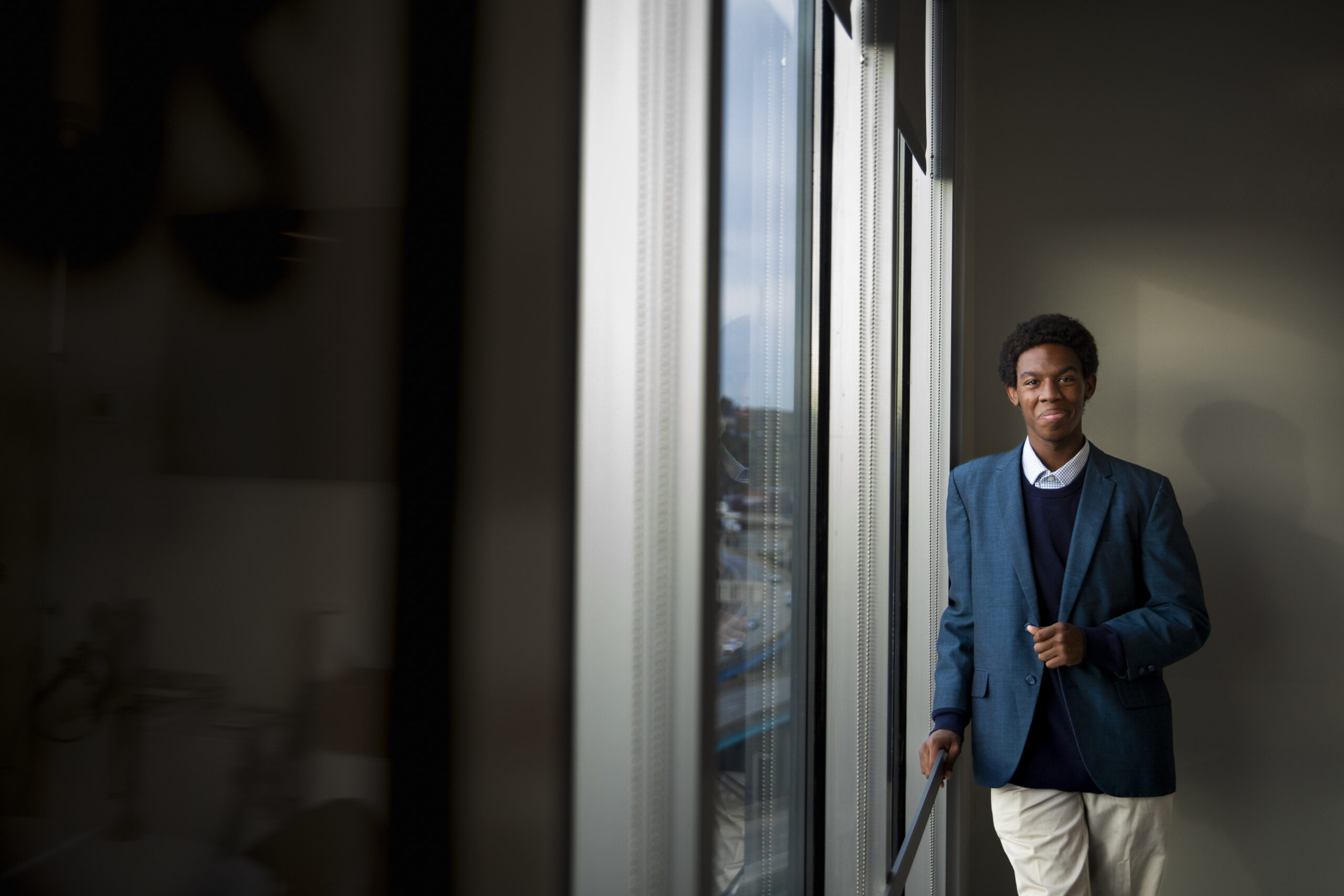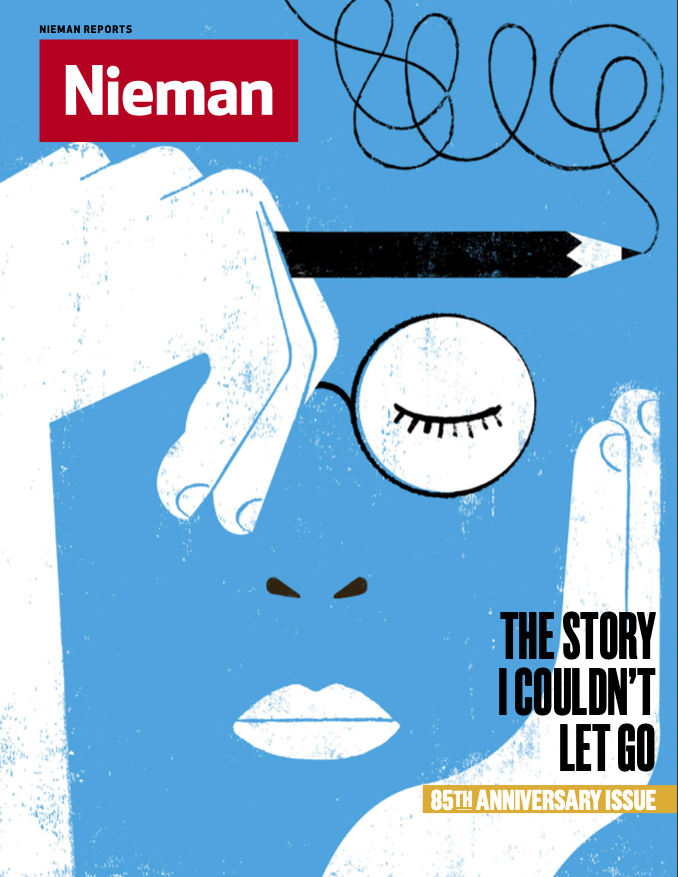
“Stories stalk you. Stories beguile you. They bewitch you. It’s not easy to fend them off, even when you’ve vowed you will,” Susan Orlean writes in our Fall 2023 issue, which commemorates the Nieman Foundation’s 85th anniversary.
Over 400 Nieman alumni gathered at Lippmann House in October for the occasion, where during the reunion weekend, one event asked fellows to respond to a simple prompt: Tell us the story you couldn’t let go of.
Five of those stories, delivered live at the reunion, are featured in this issue. These stories have liberated low-income patients from hospital debt, landed a fellow in a Zimbabwean prison, delved into the inner workings of libraries, joined together two fellows in Ukraine, and chased down the circus of Alabama politics.
Mining public records can be tedious work — especially more than 40 million of them. But as the findings finally came into focus, not even the just-the-facts questions of their veteran investigative editors could dampen the excitement of the young Chicago journalists who’d been doing it.
Two decades after a then state-senator named Barack Obama had sponsored a bill requiring police in Illinois to report the race of any motorist they pull over, the records showed not only that Black drivers were far more likely than white drivers to be stopped — even more than when the bill was passed — but that about one in five police departments was ignoring the racial profiling reporting law entirely.
There was still much more to do before the story aired on public radio station WBEZ. It would need to hold up to scrutiny. The journalists would check if it was possible that more Black than white residents hold drivers’ licenses, skewing the numbers, or if this ratio had changed over time. They divided up the tasks of asking for reaction from politicians, activists, and Obama.
Then Jim Ylisela, a longtime Chicago journalist helping guide the effort, piped in.
“This is a great place to have an anecdote from someone who’s been through this,” he said.
On that point, the youngest reporters of the eight people in the meeting were way ahead of him. They knew plenty of people who’d been stopped by police without apparent cause. They lived in communities where it happened often. They understood the perpetual anxiety of it. They feared it themselves.
One of these young journalists was Black, one Asian, and one Hispanic. And all were fellows of the new nonprofit Investigative Project on Race and Equity, launched this year by alumni of the Chicago Reporter, which was helping to produce this story about police stops.
“The whole culture of American society is shifting and doing some really hard reflecting on itself. Newsrooms need to reflect what that society looks like”
— Jourdan Bennett-Begaye, chair of the education committee and director of the Indigenous Journalists Association
It’s a single small example of a little-noticed wave of everything from one-day bootcamps to two-year fellowships being started or expanded by modest nonprofits, huge legacy media companies, and professional associations to train aspiring journalists from underrepresented groups — Black, Hispanic, Asian, Indigenous, LGBTQ+ — at the very time when diversity as a goal in education and employment is otherwise a target of the culture wars.
Dow Jones, in collaboration with Columbia University’s journalism school, started a program in the spring it calls the HBCU Media Collective to train journalism students from historically Black colleges and university in covering financial news. The Wall Street Journal last year launched a one-year finance reporting fellowship in collaboration with the National Association of Hispanic Journalists, or NAHJ, and City University of New York’s Craig Newmark Graduate School of Journalism.
NBC News and others are cultivating talent from historically Black, Hispanic-serving, and tribal colleges and universities. Politico founding publisher Robert Allbritton this year committed $20 million to fund the Allbritton Journalism Institute, which, while not aimed solely at aspiring journalists from underrepresented groups, promises to train young people “from a wide variety of backgrounds and perspectives” who will get a $60,000-a-year stipend to cover government and politics for two years.
Also just last year The New York Times Company revamped and renamed its training program for aspiring journalists of color or who are from low-income families. Now called The New York Times Corps, it teams up college freshmen, sophomores, and juniors with newsroom mentors and flies them to New York to tour The Times building.
The emergence of these and many other targeted fellowships, apprenticeships, and internships has been driven by stubbornly low levels of diversity in newsrooms. “The country is having an awakening,” says Jourdan Bennett-Begaye, chair of the education committee and director of a newly expanded journalism fellowship at the Indigenous Journalists Association. “The whole culture of American society is shifting and doing some really hard reflecting on itself. Newsrooms need to reflect what that society looks like.”
Some of the rising generation of journalists grew up watching events — like the murder of George Floyd and the massacre at Pulse, a gay night club in Orlando, that left 49 people dead — and wanting to report on issues that affect them and people like them. But that alone can’t explain this growing focus on preparing them to work in newsrooms, says Zach Wichter, who serves as a mentor for the training program run by NLGJA: The Association of LGBTQ+ Journalists.
“Journalists are people who really want to sink their teeth into the world around them, to learn and pass that learning on,” says Wichter, a reporter at USA Today. “That hasn’t really changed. What has changed is the way a lot of institutions in our industry operate.” Though it’s “slow progress,” he says, “there is an increased emphasis on diversifying newsrooms.”
Wichter works with young journalists who come to the annual NLGJA conventions to help them find and report on local stories under the supervision of the more experienced reporters and editors who are also in attendance. But he says the broader value is in encouraging these journalists, staying in touch with them, and providing them with mentors who can help them get jobs.
Even in his own career, he says, “pretty much every job I’ve had in journalism has come through a first- or second-degree connection” made through the association.
Chicago’s Investigative Project on Race and Equity trains young journalists, too, with a focus on using data to report about systemic racism in ways that many newsrooms don’t have the capacity to do themselves. In the process, it trains underrepresented journalists who can deepen the coverage and who diversify the pool of talent available for media organizations to hire full time.
“It changed my view when it comes to data,” says Ola Giwa, 34, one of the fellows on the project about traffic stops, who is Black. “You have the data, and you put it into some kind of model and it spits it back out. But it’s not just about the data. It’s about people, and telling their stories. Even if you have all the stats, all the numbers, it doesn’t really mean anything if you don’t know how to tell the story behind what’s going on.”
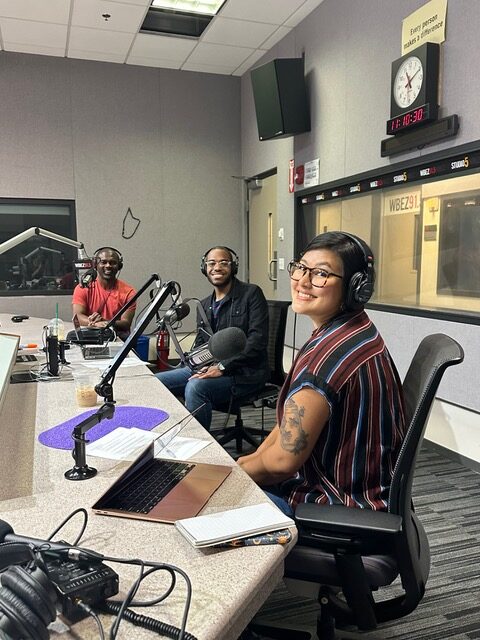
This movement also comes as the traditional pipeline into journalism jobs from small to successively larger newsrooms staffed by experienced potential mentors has been choked off, yet another victim of the closing and downsizing of media outlets. There’s also the reality that not all young people can afford to work in internships for free.
“I could go to a small newsroom and embarrass myself and a make a bunch of mistakes” on his rise through the journalism ecosystem, says Leroy Chapman, the first Black editor of The Atlanta Journal-Constitution. “And that career ladder doesn’t exist anymore,” adds Chapman, who worked his way up from the Greenville News and The State in South Carolina.
There’s a practical reason, too, for this new focus on trying to produce more journalists from underrepresented groups: low levels of trust from Black, Hispanic, Asian, Indigenous, and LGBTQ+ audiences at a time when readership and viewership are already falling off.
Nearly 60 percent of Black and more than half of Hispanic Americans say the media doesn’t understand or reflect them, a Pew survey shows. The proportion of all Americans who say they closely follow the news has declined from more than half to fewer than 40 percent since 2016.
“It’s our mission to reflect the communities we serve. All the communities. That’s race. It’s gender. It’s socioeconomic status. It’s diversity of perspectives. It’s all of these things,” says Yvette Miley, executive vice president for diversity, equity, and inclusion at the NBC Universal News Group and head of its NBCU Academy, which trains aspiring journalists from backgrounds underrepresented in the media. “That’s the business case. It’s smart business.”
In fact, says Jacqueline Jones, dean of the School of Global Journalism and Communication at Morgan State University, a historically Black school, “a lot of people tend to focus on the social unrest and things that have happened in the wake of George Floyd” as reasons so many programs have been started up, and why many of them have reached out to schools like hers. “I have a broader view. News organizations are struggling with credibility issues and making their audiences feel that they get them.”
If not criticisms, there are questions about these programs. Some observers, and young journalists themselves, wonder whether they’re sufficiently committed to lifting the people they train into jobs, for instance.
“There’s a sense of, you get a lot of Black and brown people in a room, you train them, and then once it’s over you applaud them and they go back to their colleges and nothing really happens. They don’t have any real means of breaking through these barriers,” says Zurie Pope, 20, a University of Cincinnati undergraduate and a Times Corps participant.
That can leave some people “stuck in this internship-fellowship loop,” says Jeremiah Rhodes, 26, a graduate student at the University of California Berkeley Graduate School of Journalism and an alumnus of the NLGJA training program. “I do wish there was an easier pipeline from these programs, internships, fellowships to jobs,” though he says that’s made more complicated by the general contraction of the media industry.
Program leaders also concede that improving coverage of marginalized communities depends on not only increasing diversity among front-line reporting staffs, but also among editors and managers. After all, said Wichter, quoting an old journalism adage, “‘News is what your editor finds interesting.’”
Meanwhile, even as these programs gain momentum, they’re just as suddenly threatened by attacks from the same forces that successfully pushed back against affirmative action in higher education. The American Alliance for Equal Rights, run by Edward Blum — the conservative activist behind the lawsuit against Harvard that resulted in the Supreme Court’s ending of affirmative action in university admissions — sued two law firms, alleging that their diversity fellowships discriminate against white and straight applicants and should be shut down. In response, both of the firms opened their diversity fellowships to all students; Blum in October dropped his suits against them.
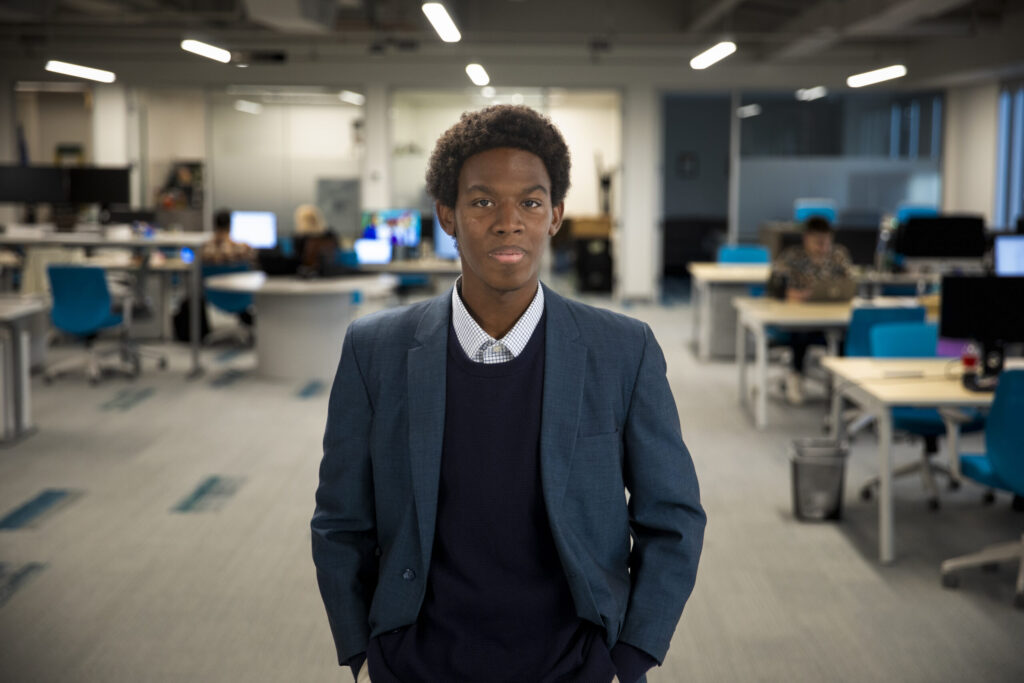
These budding journalism training programs could also face attacks like these, forcing them to shift from considering applicants’ race, sexual orientation, or gender to using other kinds of criteria, says Jamila Jefferson-Jones, a professor of law at the University of Kansas and its associate dean for diversity, equity, inclusion, and belonging.
“It’s not that you can’t mention your race,” Jefferson-Jones says. But “you can ask the candidate to frame it with their interest in diversity — ‘I want to tell the stories of the Black community,” or, ‘I want to tell the stories of the Latinx community.’ Now, does that mean that a student from a majority background could write a similar essay? Sure.” The difference, she says, is that instead of a racial preference, the selection standard “needs to align with values.”
Similar pushback has already seeped into journalism schools. The board of trustees at the University of North Carolina at Chapel Hill derailed the hiring of Black Pulitzer Prize-winning journalist Nikole Hannah-Jones, best known for her work on The Times’ “1619 Project,” by her alma mater, UNC’s Hussman School of Journalism and Media, after opposition from conservatives. Kathleen McElroy, a Black former Times editor, turned down the job of reviving the journalism major at Texas A&M University when it withdrew its offer of tenure — partly, she says she was told by a dean, because “you’re a Black woman who worked at The New York Times.”
Journalism graduate programs that have historically been conduits to top jobs are also so pricey that students from low-income backgrounds count them out. Tuition, fees, and living expenses for a nine-and-a-half-month master’s degree at Columbia come to $126,691; for the 12-month master’s at Northwestern University’s Medill School, $114,842. Comparatively low salaries make it difficult to repay student loans required to afford those kinds of costs, and students from underrepresented backgrounds are disproportionately harmed by student loan policies.
“The former gatekeepers are realizing, ‘We are missing a lot, and how do we get it?’ ” says Waliya Lari, director of programs and partnerships at the Asian American Journalists Association. That demands not only looking in new places for aspiring journalists in these categories but creating new paths for them into the profession.
When Jim Ylisela landed his first newspaper job in 1979, it was with a community newspaper on the northwest side of Chicago.
“I saw that as a way to get to the big boys downtown, which I eventually did,” Ylisela says. He worked his way up through larger and larger newsrooms, where “from the copy desk up, there used to be people who could guide young reporters.” That process is no longer available to the people who he mentors, he says. “There’s not enough people and there’s not enough time. There’s not the teaching element.”
Investigative journalism in particular, into which many aspiring journalists of color hope to move, “is a field that has a lot of gates. You do need someone to show you the ropes. You need someone to show you how to pull records,” says María Inés Zamudio, co-coordinator of a boot camp that coincides with the annual FOIA Fest in Chicago, at which volunteers mentor young journalists in those kinds of skills. Thirty-three percent of the journalists in last year’s cohort were Hispanic, 27 percent Black, and seven percent Asian.
Even young, underrepresented journalists already working in the field “have gotten stuck,” says Angela Caputo, another Chicago Reporter veteran who co-edited that story about traffic stops. “They’re not interns. They’re kind of stuck at the grunt level. They’re churning out stories, but nothing that’s going to set them apart or get them an award to help their resumés.” Or they’re not exposed to specialty beats. “If you’re not getting the exposure to financial journalism, how are you going to choose it?” asks Robin Turner, vice president of training, culture, and community at Dow Jones.
What these programs have going for them is a generation of young people who want passionately to be journalists, despite the industry’s many challenges — often for the purpose of exposing wrongs they’ve witnessed, or stories they don’t see covered. In some cases, the fellowships and internships have already given them a platform to do that.
Being pulled over by the police in disproportionate numbers, for example, “is an experience white drivers don’t have,” says Taylor Moore, 27, one of the fellows who worked on the Investigative Project on Race and Equity racial profiling story. “They get pulled over and they see it as an inconvenience. Their first concern they probably have is, ‘How do I get out of this ticket?’ rather than, ‘Will reaching for my phone be seen as reaching for a gun?’”
Much existing coverage in Chicago “is insensitive to the racial dynamics,” says Moore, who is Asian. “The point of view is of a moneyed white person living in a white community, maybe a suburb, and you can see it manifested in how crime is covered, for example.”
The fellowship was particularly helpful giving her experience on an investigative team, she said. Moore had otherwise worked mostly as a freelancer, and freelancers can’t afford to pay for resources such as Pacer — a database of court records — or LexisNexis, which gives access to government and business information. “You don’t have access to those tools.”
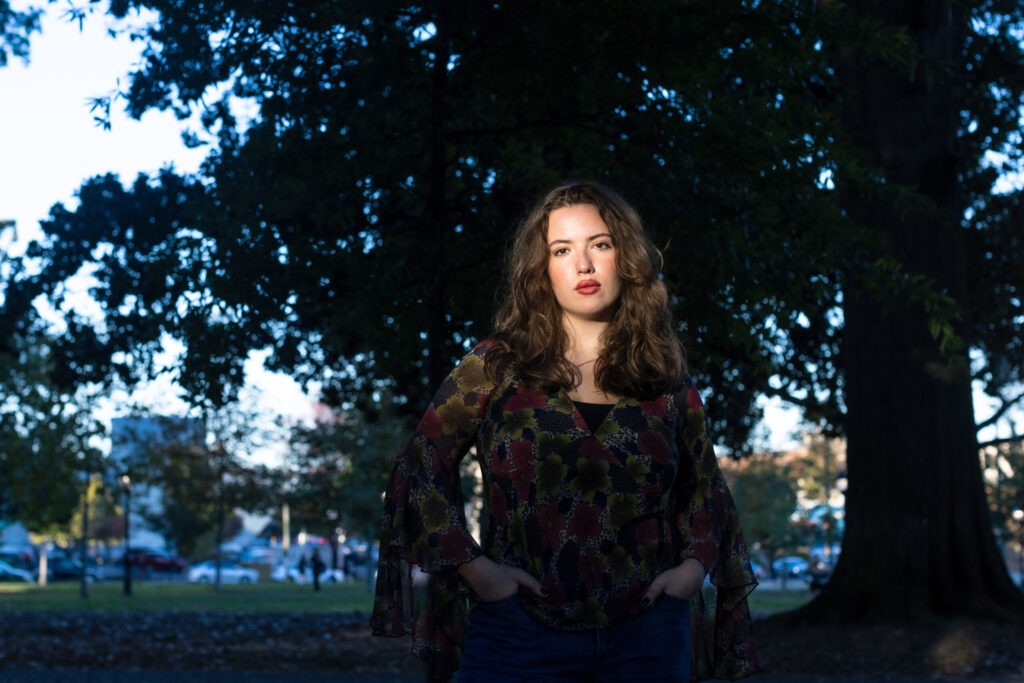
The connection she could make with fellow Korean Americans helped Juliana Kim cover the fatal shootings of eight people at three Atlanta-area spas in 2021, when she was a fellow at The New York Times. “I got a call from an editor who said, ‘Can you speak Korean?’ and I said, ‘Kind of,’ and he said, ‘Book a ticket to Atlanta right now.’” remembers Kim. When she went to interview the family of one of the victims, she says, she realized they might be hungry, so she brought them some Korean soup.
“They were similar to my age and we had similar upbringings,” says Kim, now 25 and a digital reporter who covers breaking news at NPR. “It helped me be to get into deeper conversations with people who might have had reservations about the media.”
At first, she says, she had been worried about being pigeonholed into a certain beat or type of story because of her race and background. “I didn’t know going into the internship what it meant to be a reporter of color. I didn’t know the weight of that, and how it’s also a strength,” Kim says. But now, she says, she thinks “that was very naïve of me. Now it would be an honor to be pigeonholed to cover Asian stories.”
Gabriela de Camargo Gonçalves sees the empathy divide not only in her journalism, but in her daily life. “Sometimes I’ll talk to my friends about my experience of living in the United States as an immigrant, and they’ll say, ‘I had no idea,’” says Gonçalves, the daughter of Brazilian immigrants and a senior at Virginia Commonwealth University who is part of the Times Corps.
“It’s never going to translate. You can do your best to talk to people who have lived it, but I don’t think you’re ever going to know what it’s like,” she says.
Young Indigenous journalists with whom she works see the job as a way of telling positive stories for a change, says Bennett-Begaye of the Indigenous Journalists Association, rather than the “three Ds” of coverage they’re used to — that Indigenous Americans are drumming, drunk, or dead. (A 2021 IJA report found that the word “violence” appeared in more than 40 percent of stories in The New York Times about Indigenous people.) “That’s the only time that native people are reported in the news, and frankly, they’re tired of it,” she says.
They’ve been influenced instead by successes, such as those of Deb Haaland, the first Indigenous cabinet member, and Nicole Aunapu Mann, the first Indigenous woman in space, and by what Bennett-Begaye called authentic portrayals in popular culture, such as the show “Reservation Dogs.” “Those are the kinds of stories young people want to be a part of.”
“Even for us, it’s hard to gain trust,” says Bennett-Begaye, who is Navajo. “Native people have a mistrust of the federal government but they also have a mistrust of media. I may not look like them. I may not talk like them. I went to a university.”
Some editors have historically considered it a conflict of interest for journalists from certain backgrounds to cover other people from similar backgrounds. Ken Miguel, executive producer for special projects at KGO TV in San Francisco, remembers when a female reporter and photographer for the San Francisco Chronicle were pulled off the same-sex marriage beat after they themselves got married.
“It sounds like an implied bias, which is one of the tenets of journalism: You don’t want anything that can be considered a bias by a reader or viewer,” says Miguel, president of the NLGJA. “But people who are intimately experiencing the negatives about a story know more about what’s happening than people who don’t. Putting your personal feelings aside and explaining to people in your newsroom why things are a certain way — that’s not a bias. That’s educating people about the facts. And that’s what we’re seeing in this new generation of journalists.”
For Toni Odejimi, The New York Times credential on her resume is already a huge help.
“This program has probably opened so many doors for me that I didn’t even know were closed before,” says Odejimi, 20, a Georgia State University junior who was accepted to the Times Corps and hopes eventually to cover politics. “The most heartwarming thing about it was I saw people that looked like me and looked like my friends, and I saw hard-working, brilliant Black journalists everywhere I went.”
The program “took a gamble on a Black girl that goes to a state school with a 100 percent acceptance rate,” she says. “I hope and I wish that more of those national programs can say to themselves, ‘You know what? This person might have less experiences and they go to a less selective schools, but they still have so much passion.’”
